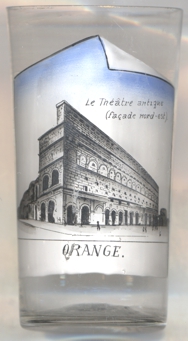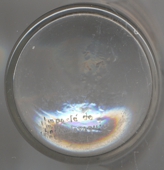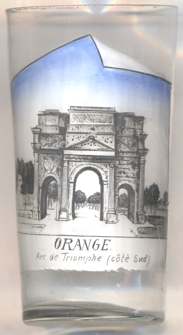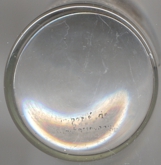

|
| FRANCE | FRANCE |
| région: Provence-Alpes-Côte d'Azur | |
| département: 84, Vaucluse |
Orange (in Provençal: Aurenja (classical norm) or Aurenjo (Mistralian norm)) is situated at an elevation of 42 m on the river Eygues a few kilometres before its confluence with the Rhône in the départment Vaucluse, about 21 km north of its chef-lieu Avignon and about 105 km northwest of the regional capital Marseille. The municipality has a population of about 28,500 (2020).
The settlement is attested as Arausio and Arausion in the 1st and se2ndcond centuries AD, then as civitas Arausione in the 4th century, civitas Arausicae in 517, Aurengia civitatis in 1136, and as Orenga in 1205. Roman Orange was founded in 35 BC by veterans of the second legion as Colonia Julia Firma Secundanorum Arausio. A previous Celtic settlement with that name existed in the same place, and a major battle, which is generally known as the Battle of Arausio, had been fought in 105 BC between two Roman armies and the Cimbri and Teutones tribes. The town prospered, but was sacked by the Visigoths in 412. It had, by then, become largely Christianised, and from the end of the 3rd century constituted the Ancient Diocese of Orange. It hosted two important synods, in 441 and 529. The Second Council of Orange was of importance in condemning what later came to be called Semipelagianism. The sovereign Carolingian counts of Orange had their origin in the 8th century; they passed into the family of the lords of Baux. From the 12th century, Orange was raised to a minor principality, the Principality of Orange, as a fief of the Holy Roman Empire. During this period, the town and the principality of Orange belonged to the administration and province of Dauphiné. When the counts of Nassau, with estates in the Netherlands, inherited the title Princes of Orange in 1544, the principality was incorporated into the holdings of what became the House of Orange-Nassau. This pitched it into the Protestant side in the Wars of Religion (1562–1598). The city remained part of scattered Nassau holdings until it was repeatedly captured by France during his wars of the late 17th century before it was finally ceded to France in 1713 under the Treaty of Utrecht. Following the French Revolution in 1789, Orange was absorbed into the French département of Drôme, then Bouches-du-Rhône, then finally Vaucluse. However, the title remained with the Dutch princes of Orange.

 The town is renowned for its Roman architecture; The Roman theatre, the Triumphal arch and their surroundings were listed in 1981 by UNESCO as a World
Heritage Site (see list of such designated places depicted on glasses of this collection).
The town is renowned for its Roman architecture; The Roman theatre, the Triumphal arch and their surroundings were listed in 1981 by UNESCO as a World
Heritage Site (see list of such designated places depicted on glasses of this collection).
The  Roman Theatre of Orange was built early in the 1st century AD and is one of the best preserved of all Roman
theatres. It is believed to be one of the first of its kind in this area of modern-day France. One of the most iconic parts of this structure is the grand
exterior façade, which measures to be 103 metres long and 37 metres high. Originally, there was also a wooden roof across the theatre to protect
the audience from unfavorable weather conditions. The stage, which is 61 metres long and raised about one metre from the ground, is backed by a
37-metre-high wall whose height has been preserved completely. The theatre was closed by official edict in AD 391. It was probably pillaged by the
Visigoths in 412, and like most Roman buildings was certainly stripped of its better stone over the centuries for reuse. It was used as a defensive post
in the early Middle Ages, and by the 12th century began to be used by the Church for religious plays. Reconstruction began in 1825 with the intent of
returning the theatre to its original purpose. Today, the Théâtre d'Orange is considered the best preserved Roman theatre in all of Europe.
In 1981 UNESCO declared the theatre as a World Heritage Site.
Roman Theatre of Orange was built early in the 1st century AD and is one of the best preserved of all Roman
theatres. It is believed to be one of the first of its kind in this area of modern-day France. One of the most iconic parts of this structure is the grand
exterior façade, which measures to be 103 metres long and 37 metres high. Originally, there was also a wooden roof across the theatre to protect
the audience from unfavorable weather conditions. The stage, which is 61 metres long and raised about one metre from the ground, is backed by a
37-metre-high wall whose height has been preserved completely. The theatre was closed by official edict in AD 391. It was probably pillaged by the
Visigoths in 412, and like most Roman buildings was certainly stripped of its better stone over the centuries for reuse. It was used as a defensive post
in the early Middle Ages, and by the 12th century began to be used by the Church for religious plays. Reconstruction began in 1825 with the intent of
returning the theatre to its original purpose. Today, the Théâtre d'Orange is considered the best preserved Roman theatre in all of Europe.
In 1981 UNESCO declared the theatre as a World Heritage Site.

 The
The  Triumphal arch of Orange was built to the north of the Roman town. There is debate about when the arch was
actually built, but current research that accepts the inscription as evidence favours a date during the reign of emperor Augustus
(27 BC–AD 14). The arch is the oldest surviving example of a design that was used later in Rome itself.
The arch was built into the town's walling during the Middle Ages to guard the northern entry points of the town. While the medieval fortifications have
later been broken off, the Roman arch has been preserved and first restoration works were carried out in the late 1820s. Along with the Roman Theatre of
Orange, the Triumphal Arch was inscribed on the UNESCO World Heritage List (see list of this collection) in 1981 because of
its exceptional preservation.
Triumphal arch of Orange was built to the north of the Roman town. There is debate about when the arch was
actually built, but current research that accepts the inscription as evidence favours a date during the reign of emperor Augustus
(27 BC–AD 14). The arch is the oldest surviving example of a design that was used later in Rome itself.
The arch was built into the town's walling during the Middle Ages to guard the northern entry points of the town. While the medieval fortifications have
later been broken off, the Roman arch has been preserved and first restoration works were carried out in the late 1820s. Along with the Roman Theatre of
Orange, the Triumphal Arch was inscribed on the UNESCO World Heritage List (see list of this collection) in 1981 because of
its exceptional preservation.
Both glasses are marked on the bottom Importé de Tchécoslovaquie (Imported from Czechoslovakia).
[https://de.wikipedia.org/wiki/Orange_(Vaucluse), https://en.wikipedia.org/wiki/Orange,_Vaucluse;
http://fallingrain.com/world/FR/B8/Orange.html;
https://en.wikipedia.org/wiki/Roman_Theatre_of_Orange;
https://en.wikipedia.org/wiki/Triumphal_Arch_of_Orange]
![[scale]](lineal.jpg)